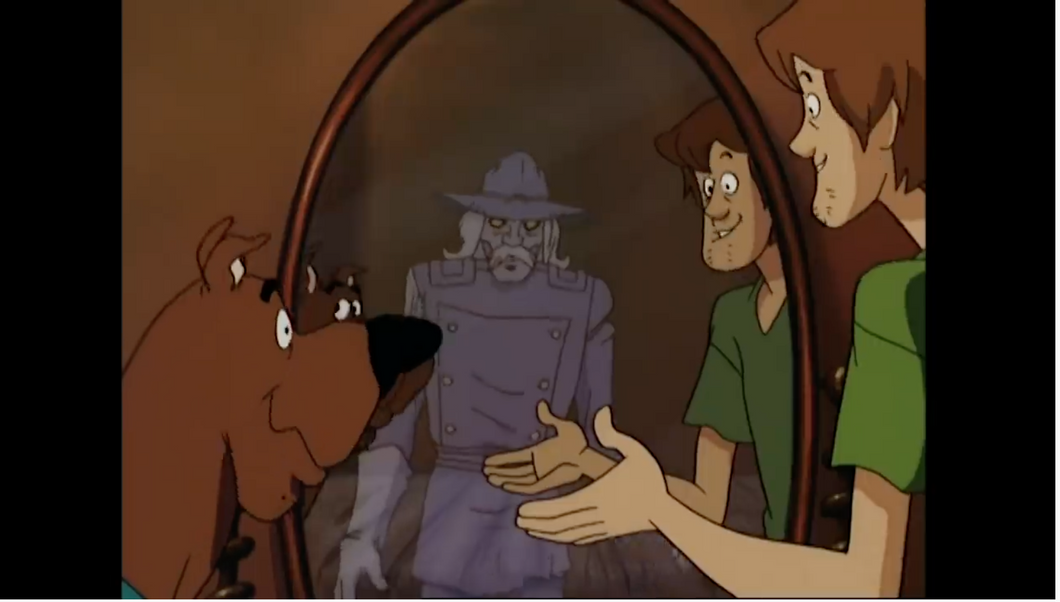One thing that I've always been fascinated by is when movies and TV shows try to update a franchise to make it darker and more mature. The filmmakers try to inject thought provoking ideologies into family friendly outings. I've mentioned a version of this before in my article about the "Goosebumps" TV show from the '90s. Certain episodes went beyond the usual kid-friendly horror to push it towards an older audience, like when "A Night In Terror Tower" followed two siblings who were being hunted down by a medieval executioner. But I have to say, there's one franchise that I think did this perfectly: Scooby-Doo.
I know, this sounds ridiculous. I can already hear everyone laughing as they read this. But hear me out. Hanna-Barbera's hit show has always been known for being a kid's show. It plays up the laughs with slapstick comedy, and always follows the same formula of the "monster" being revealed as some guy in a mask. It was never too serious, and it quickly became one of the biggest hits for Saturday morning cartoons.
In the 1990s, Hanna-Barbera released four direct-to-video Scooby-Doo movies. This is when things got interesting. In my opinion, the best of these movies, and the subject of this article, is "Scooby-Doo on Zombie Island." At the start of the movie, the gang has actually been broken up for quite some time. They got tired of the monotony of always unmasking fake monsters, so they broke up the gang and went their separate ways. After starting a successful television show with Fred, Daphne decides that she wants to get back in the grove of solving mysteries, but with the intention of finding real monsters this time. The gang quickly reunites, and they head out on their journey.
They soon end up in New Orleans, where they discover a haunted house at a place known as Moonscar Island. The house's owner, Simone, tells them that the house is haunted by the ghost of a pirate named Morgan MoonScar, who allegedly has buried treasure on the island. The gang quickly comes up with theories that are typical for the show, including holographic projects and a guy in a pirate costume who's trying to find the treasure. But all of this is quickly thrown out when the gang learns the truth.
It is soon discovered that there are real ghosts on the island, and even some zombies. It's revealed that Simone, along with her cook, Lena, are actually responsible for the paranormal activity. They explain that they were settlers on the island who worshiped a cat deity. When Morgan MoonScar killed the rest of the settlers by feeding them to alligators, Simone and Lena prayed that their cat god would curse the pirates. Their prayer came true, turning the pair into werecats during the harvest moon so they could enact their revenge. But they were subject to the curse too, being forced to drain the life force of other people every harvest moon in order to live. Eventually, the gang is able to defeat the cursed duo, avenging the spirits of those who were killed on the island.
This is a much darker tone than the rest of the Scooby-Doo franchise. For starters, the visuals alone ramp up the maturity a lot. The sight of Morgan Moonscar's skeleton being covered in rotting flesh to turn into a zombie is pretty intense for a kid's movie. The transformation of Simone and Lena into werecats pushes this further, with their clothes ripping to shreds, fur growing out of their skin, and their teeth growing razor shop. It seems like something straight out of a werewolf movie.
The movie also deserves major props for being the first to treat real monsters seriously. There were a few times on TV where the gang encouraged real monsters, but it was mainly played for laughs. This time, it's almost treated as a plot twist. The gang spends most of the film treating it like all of their other cases, expecting the monster to be just another guy wearing a mask. So it's a shock when they find out that all of the zombies and ghosts are actually real. It's an awesome twist that bucks the traditional formula of the show.
Although it's based on a kid's show, "Scooby Doo on Zombie Island" is a perfect example for how to update a franchise. It honors what came before it, while also moving in a new direction. It adds to the tropes of the series by making them more mature. It finds the perfect balance between comedy and drama to tell a compelling, mature story that's fit for everyone. It still might not be the most serious movie in the world, but it's the perfect example for how to make a darker rendition of a franchise without losing its identity.
















